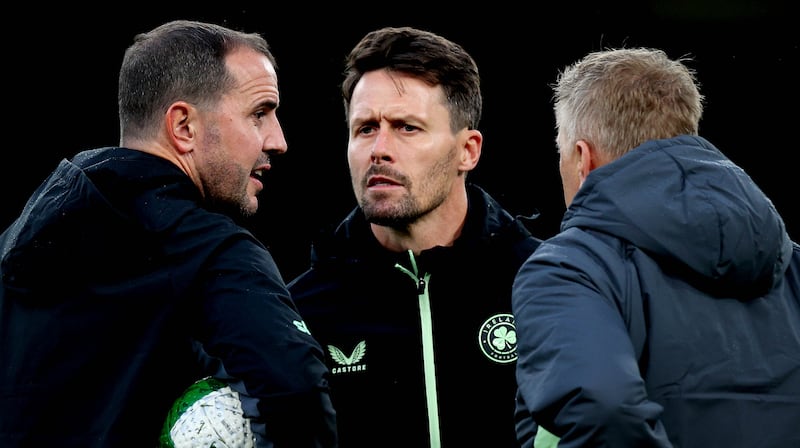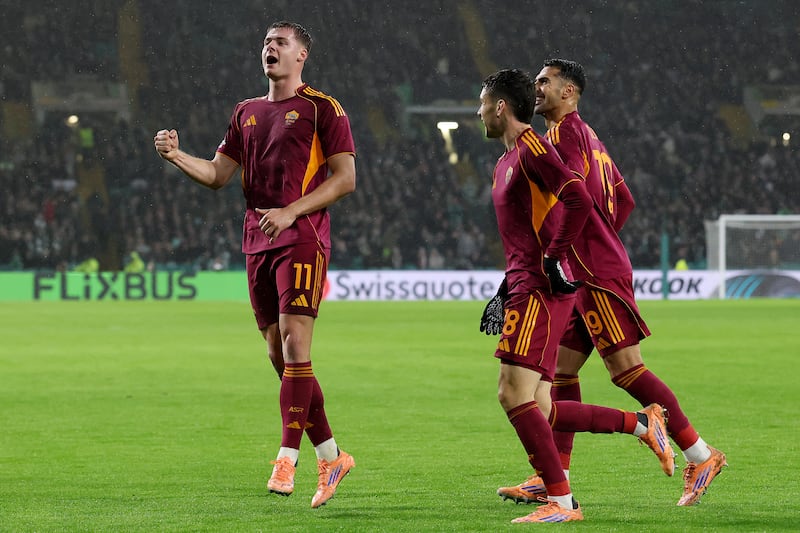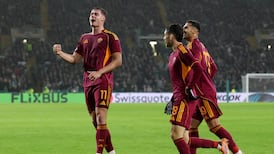There are different, but equally effective ways to manage the Republic of Ireland. I remember the best and worst of times under Mick McCarthy, Brian Kerr, Steve Staunton and Giovanni Trapattoni.
If the FAI was driven by optics, Heimir Hallgrímsson would have been pictured at Celtic Park on Thursday night as Liam Scales and Adam Idah scored in the 5-1 defeat of Slovan Bratislava.
With the Irish manager watching two of his players score in the Champions League, in Paradise, Hallgrímsson would have learned about the historic connection between Glasgow and Ireland, and the current link between Shamrock Rovers and Celtic.
He might then have had 48 hours to study every move Scales and Idah made on the Wyscout website before linking up with John O’Shea at St Mary’s to (hopefully) witness Will Smallbone featuring for Southampton against Ipswich Town.
Mohamed Salah returns and sets up Hugo Ekitiké to help Liverpool beat Brighton
Angry fans throw objects, invade pitch after Lionel Messi’s brief appearance at India event
Mohamed Salah back in Liverpool’s squad for game against Brighton
Evan Ferguson hits brace for Roma but early return to Brighton may be on the cards
He could rub shoulders with Ipswich manager Kieran McKenna and begin to form a vital connection to a club that houses five Irish players.
Knowing Hallgrímsson was in the directors’ box, Sammie Szmodics and Chiedozie Ogbene might have additional incentive to make an impression in their best positions.
Let’s keep going. It’s only a two-hour drive to the Amex where, on Sunday, Andrew Omobamidele might be marking Evan Ferguson.
If neither of them features off the bench for Nottingham Forest and Brighton, it would not be a wasted journey. Heimir could speak to them afterwards, providing words of encouragement.
I remember getting a nudge from a staff member at West Brom the morning of a game. “Mick McCarthy is coming to see you play today, Kev.” I was 20, and only recently capped against Iceland before being sent back to under-21s, so I ran out at the Hawthorns as if I was on trial for the Republic of Ireland.
Mick’s presence should have prompted a more professional approach but, instead, I let my emotions rule my head, bringing an edge to every tackle and in possession I kept trying the spectacular. Right or wrong, I was recalled to the squad.
The FAI has not heaped additional pressure on Hallgrímsson to be their PR guru. As the new Ireland manager, he deserves our respect.
If only there was more time. Apparently, he will attend club games before the October window, when trips to Helsinki and Athens have the potential to drag Ireland down to a new low. He also intends to meet senior players in private but it’s the younger internationals I worry about.
The previous management of Stephen Kenny and Keith Andrews took weekly trips to England while fast-tracking an entire crop of under-21s into the senior squad.
In theory, this was a great idea. In reality, defeat and failure are all they know as Irish internationals.
The Icelander admitted that a need exists to fill the squad with confidence before facing Finland and Greece. But they need to know he is watching them, up close, not just on a laptop.
Sure, O’Shea and Paddy McCarthy built valuable relationships with players as the caretaker management but the results since Kenny was sacked suggest that Hallgrímsson has to be the main man.
I’ll never forget Trap’s first team meeting as Ireland manager. In broken English his message was crystal clear: “In Italia, the newspapers are only used [insert graphic gesture] for wiping your arse.” The room exploded in laughter. “They are for shit, no?” he explained.

Out to training we went, where the old Azzurri coach stood among us, teaching how catenaccio – “the door bolt” – can be employed. “Shape, shape, shape” was the priority as Trap manhandled defenders on set pieces, showing the way his Juve and Inter players used to stop an attacker getting across them.
Basic stuff, and we lapped it up.
Trap was pushing 70 so he didn’t attend club games in England but his assistants, Marco Tardelli and Liam Brady, showed up every time I went to a London ground.
Brady was crucial to the Trap-era being a relative success. O’Shea can fill a similar role.
Hallgrímsson will attend more club matches than Trapattoni and less than Kenny. Make of this what you will, but he has already shown a ruthless streak. For Greece in Dublin, he dropped Idah and Matt Doherty after their contributions against England.
Some say the first-half against Greece was an improvement from the collective no-show versus England. I strongly disagree. Ireland, while better organised, lacked a desire in the opening 20 minutes that used to be guaranteed. The absence of urgency invited the Greeks to play themselves into the contest.
It wasn’t until my sixth cap that I felt like a proper international footballer. Yugoslavia brought a fantastic side to Lansdowne Road, full of top players such as Dejan Stankovic and Predrag Mijatović, but we found a way to win, 2-1. That was 25 years ago. This mentality has been lost in the 2020s.
On the current trajectory, Irish football could keep tumbling down the levels. A rot is setting in. Hardly Hallgrímsson’s fault, but it is his problem to solve.
Ireland must not lose to Greece four times inside 18 months. If I were to be given one last cap in Athens next month, I’d play as if my entire international career was on trial.


















